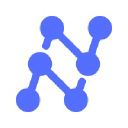If you're using Salesforce, then you're already familiar with its benefits as a cloud-based customer relationship management (CRM) solution. In isolation, Salesforce's sales and marketing capabilities are impressive; automates sales processes, makes it easy to manage multiple marketing campaigns, provides funnel insights to sales leaders, and much more.
But, like any SaaS solution used in the business world, Salesforce's impact grows exponentially when combined with strategic business solutions that enable custom functionality for a variety of business functions. Known as “Salesforce integrations,” these combinations of systems will help improve your organization in several ways if used correctly.
Whether you're looking for a more agile approach to marketing campaign management, a little extra help when it comes to accounting cycleor a way to keep all your employees informed internally, there are Salesforce integrations you can take advantage of.
Benefits of Salesforce Integration
Finding the right systems to integrate with Salesforce and figuring out how to actually execute these integrations can be intimidating, but it's actually quite simple. Salesforce has been around for many years and its integration capabilities have been refined, making them reliable and accessible for any business. With Salesforce integrations, you'll see a number of benefits start to take shape:
Cross-functional collaboration
If your sales team uses one system, your marketing team uses another, and your finance team uses a third system, it's much harder for these functional teams to collaborate with each other. Not only does every system come with a learning curve, but if the systems don't communicate seamlessly, finance may see one data point while the sales team sees a conflicting data point. With Salesforce integrations, even if each function depends on a different tool, it becomes MUCH easier to drive alignment between functions, allowing them to work together in new ways.
Data synchronization between systems
Without integrations, when a sale is recorded in Salesforce, it would need to be recorded on each different platform for it to be reflected correctly. That means a lot of manual effort for your employees. By leveraging Salesforce integrations, a sale can be recorded in one place and flow to integrated systems without human intervention. This also leads to better collaboration within your organization because everyone has access to real-time metrics and KPIs.
Improved information and reporting
Because each system's data sets are connected, creating detailed and accurate analytical dashboards or business reports can be done in seconds. If you want to evaluate revenue data, sales data, and expense data in a single report, your analysts no longer need to download data from multiple systems and compile it into a manual file using Microsoft Excel. They can simply create the report, tell it what data to pull from where, and update it automatically.
Automation opportunities
Automating manual tasks and heavy data processing can save businesses a lot of time and money, but without the right tools, it can be difficult to achieve. Key Salesforce integrations can help with functional automation, such as accounts payable automation, marketing automation and outreach automation. When you're weighing the costs and benefits of investing in new software solutions, be sure to take into account the time savings associated with automation.
How to integrate with Salesforce
When it comes to forging Salesforce integrations, there are a few ways to do it:
- Native integrations: Some apps have built-in integration capabilities geared toward Salesforce. Things like Google Cloud, MailChimp, and Slack are designed to integrate seamlessly with the CRM giant.
- AppExchange/Third Parties: External apps that have the ability to connect with Salesforce are listed on the Salesforce AppExchange and the integration itself usually only requires a few clicks.
- Tailor-made: If your organization has a proprietary software solution or uses an application that is not listed on the Salesforce AppExchange, it is possible to create a custom integration channel using API technology.
- Connector Applications: If you've heard of platforms like Workato, Zapier, MuleSoft or something like thatYou're already familiar with the tools that were created to make Salesforce integrations easier.
Salesforce Integration Highlights – Top 10
With thousands of Salesforce integrations available, the possibilities are truly endless. As more and more companies begin to take advantage of these tools, the list of available integrations and their associated capabilities will continue to grow. Some of the top Salesforce integrations of 2024, broken down by feature, are:
Accounting

Nanonets Salesforce Integration
Nanonetworks and Salesforce have two key things in common: They both process and automate customer-facing transactions. When a sale is completed and recorded in Salesforce, Nanonets uses OCR technology to automatically send a bill to the customer, process the payment and record the customer's history in both systems. Whether they are sales orders, invoice processingor customer relationships you want to improve, the Nanonets Salesforce integration is revolutionary.

Salesforce QuickBooks Integration
As a long-standing software solution aimed at optimizing the accounting cycle, QuickBooks works well with Salesforce to provide the data needed for revenue forecasting and sales goal planning. This integration also streamlines the process of receive payments and processing customer invoices. Because of synchronized customer data reflected in both systems, the Salesforce QuickBooks integration also reduces manual data errors.

FreshBooks Salesforce Integration
FreshBooks EasyConnect is a native Salesforce application that enables two-way data flow between Salesforce and this SaaS accounting solution aimed at self-employed professionals. This integration allows users to sync customer information between Salesforce and FreshBooks and makes sales-related tasks easier. Expense management.
Marketing

HubSpot Salesforce Integration
The HubSpot Salesforce integration allows users to use data in Salesforce when sending outreach emails through HubSpot, creating a more personalized customer experience. It's also easy to connect revenue numbers to specific campaign results, giving decision makers a faster response time when adjusting campaign strategies.

Mailchimp integration with Salesforce
Mailchimp contacts can be pulled directly from Salesforce leads and contacts, and campaign activity reports from Mailchimp emails can be viewed in Salesforce. Integrating Mailchimp with Salesforce drives targeted marketing efforts, higher engagement, and better sales results.

ActiveCampaign Salesforce Integration
If you're looking to automate email tracking of Salesforce contacts and target leads based on certain characteristics, like company size, the ActiveCampaign Salesforce integration is exactly what you need. It's easy to track how prospects respond to your messages and notify the perfect team member when it's time to reach out.

Demand base integration
Demandbase provides detailed information about target accounts, enabling highly personalized sales and marketing efforts that resonate with key decision makers. When integrated with Salesforce, these insights become actionable within the CRM, enabling better targeted campaigns, better alignment between sales and marketing, and ultimately accelerated sales cycles and higher close rates.
Communication and collaboration

Loose Salesforce Integration
If your sales and service teams need to be able to access real-time customer updates, share key customer information, and work together to advance deals, they can do it all within Slack. The Salesforce Slack integration keeps internal communication a top priority while ensuring that all the information your employees need to be successful can be found at a glance.

Google Workspace Salesforce Integration
Because it's easy to sync emails, calendars, and documents between Google Workspace and Salesforce, your teams will never miss a beat when collaborating with each other. It doesn't take much to increase the productivity and effectiveness of your hard-working employees, and the Google Workspace Salesforce integration is a step in the right direction.

Microsoft Outlook Integration with Salesforce
Customer interactions that occur through the Outlook interface will automatically be recorded in Salesforce, reducing the time needed to track customer transactions and get a detailed view of customer communication attempts. . Integrating Microsoft Outlook with Salesforce will help reduce data entry errors and provide a constant view of key information related to customer interactions.
What integration catches your attention?
The above list of Salesforce integrations only scratches the surface. With tens of thousands of integration options, you can transform many different business functions. We know you will love the victories of AP Automationemail campaign management and easy alignment of revenue with sales information, but if you're looking for something different, all you need is Internet access and some time to review the Salesforce App Exchange to find the perfect fit.
 NEWSLETTER
NEWSLETTER





